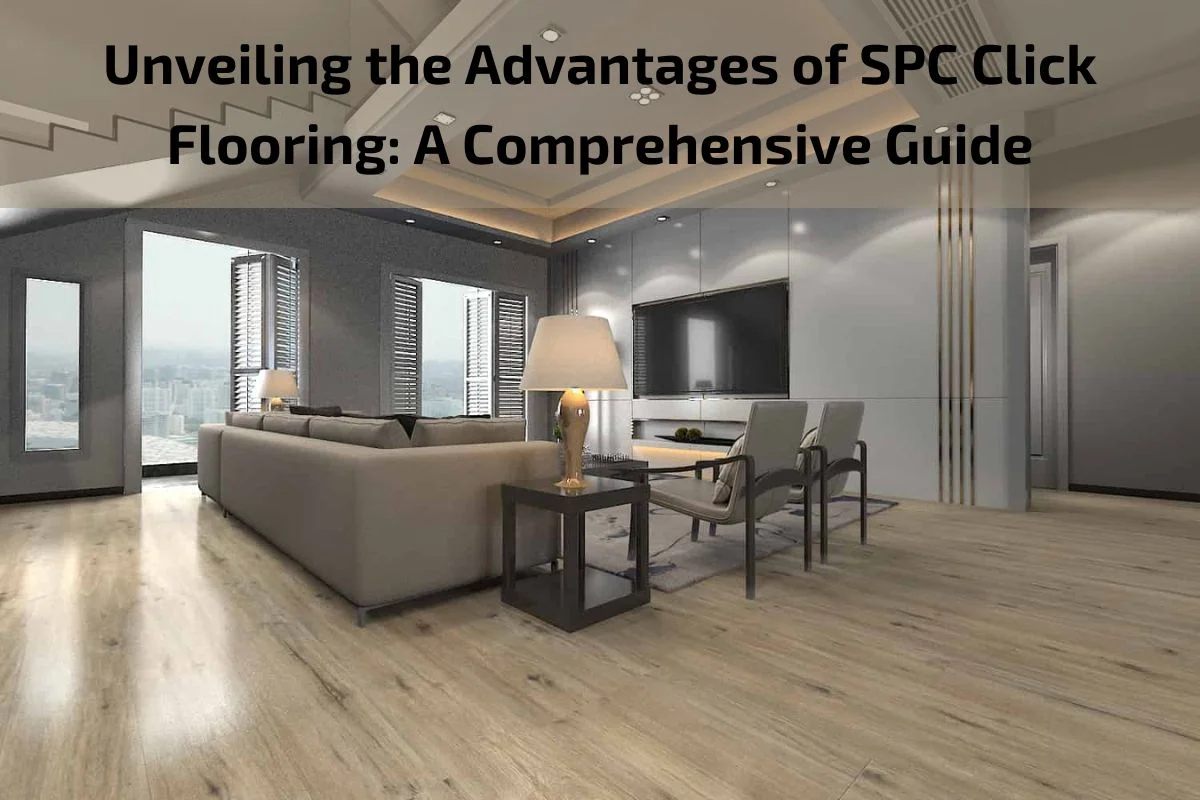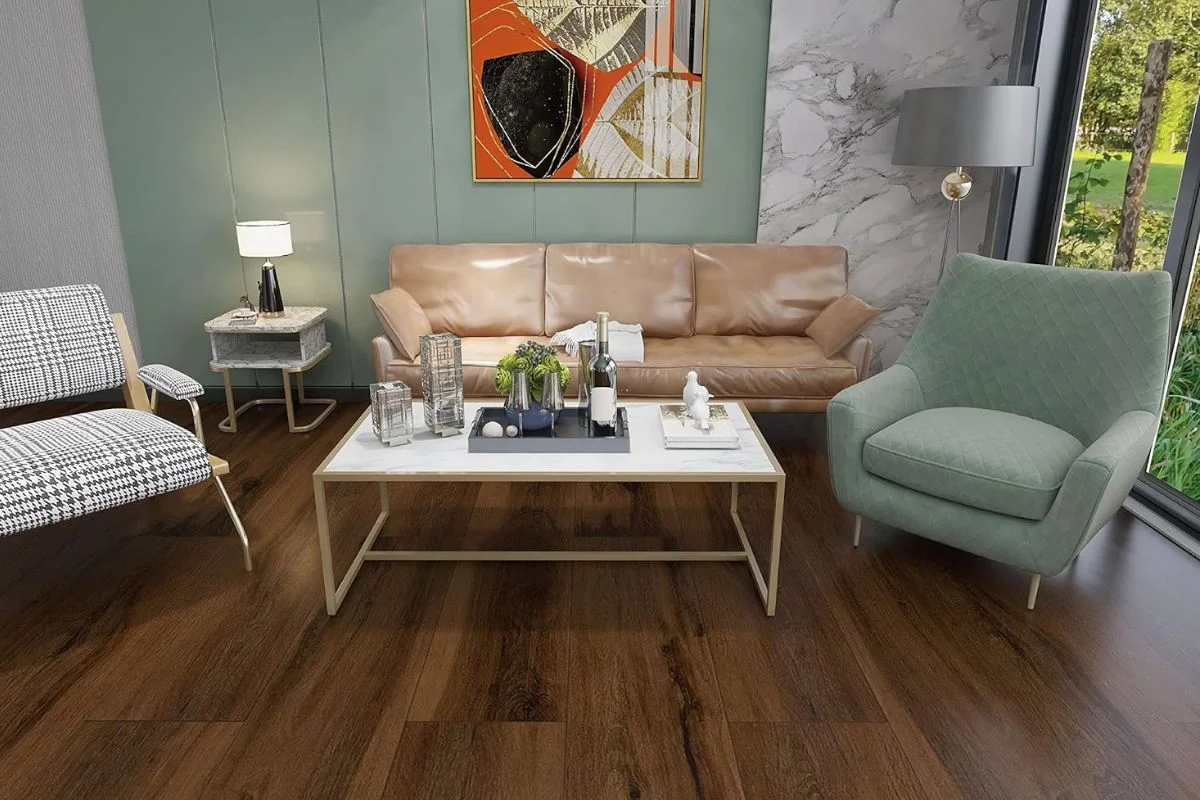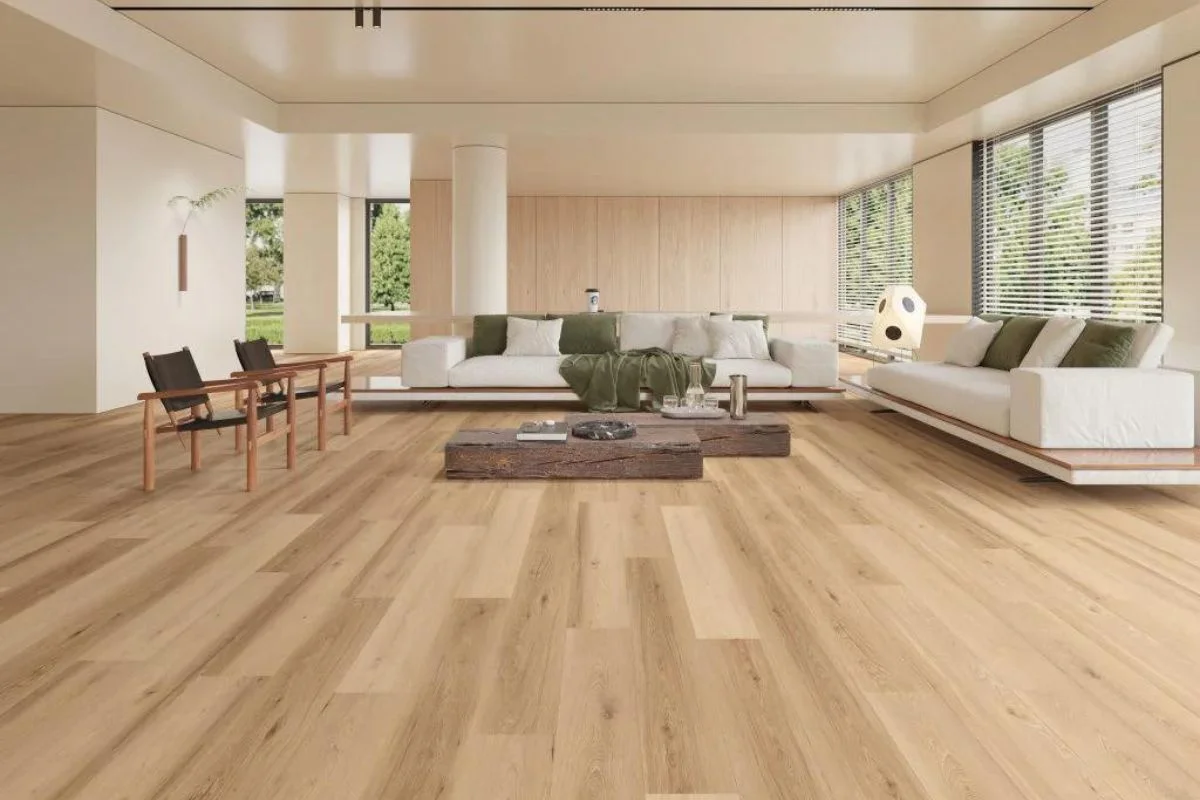Unveiling the Advantages of SPC Click Flooring: A Comprehensive Guide
In the realm of interior design and home improvement, the choice of flooring plays a pivotal role in shaping the aesthetics, functionality, and overall ambiance of a space. Amidst the plethora of options available, SPC (Stone Plastic Composite) click flooring has emerged as a frontrunner, revolutionizing the way we think about flooring solutions.
In this comprehensive guide, we embark on a journey to unveil the myriad advantages of SPC click flooring. From its remarkable durability and water-resistant properties to its ease of installation and low maintenance requirements, SPC click flooring represents a cutting-edge innovation that caters to the diverse needs and preferences of homeowners and designers alike.
Join us as we delve deeper into the world of SPC click flooring, exploring its unique features, benefits, and applications. Whether you’re embarking on a home renovation project or seeking to elevate the aesthetics of a commercial space, this guide is your ultimate companion in understanding why SPC click flooring stands out as a superior choice in the realm of modern flooring solutions.
Brief Overview of SPC Click Flooring
SPC (Stone Plastic Composite) click flooring is a revolutionary type of flooring that combines durability, water resistance, and ease of installation. It is crafted from a blend of natural limestone powder, polyvinyl chloride, and stabilizers, resulting in a rigid core that is highly resistant to scratches, dents, and stains. The “click” refers to the innovative installation system, where planks seamlessly lock into place without the need for adhesives or nails. SPC click flooring offers a wide range of design options, including realistic wood and stone textures, making it a versatile choice for residential and commercial spaces alike
Importance of SPC Click Flooring in interior design
SPC click flooring holds significant importance in interior design due to its ability to seamlessly blend aesthetics with functionality. Here’s why it’s a game-changer:
Versatility: SPC click flooring offers a myriad of design options, from authentic wood grain patterns to elegant stone textures. This versatility allows interior designers to achieve various aesthetic themes, whether it’s rustic, contemporary, or industrial.
Enhanced Durability: Unlike traditional hardwood or laminate flooring, SPC click flooring boasts exceptional durability. Its rigid core composition makes it resistant to scratches, dents, and stains, ensuring that it retains its pristine appearance even in high-traffic areas.
Water Resistance: One of the most significant advantages of SPC click flooring is its water-resistant properties. This makes it an ideal choice for moisture-prone areas such as bathrooms, kitchens, and basements, where traditional hardwood flooring may be susceptible to warping or damage.
Ease of Installation: The click-lock system of SPC flooring allows for straightforward installation without the need for messy adhesives or specialized tools. This not only saves time but also reduces installation costs, making it an attractive option for homeowners and designers alike.
Low Maintenance: SPC click flooring requires minimal maintenance compared to other flooring options. Regular sweeping and occasional mopping are typically all that’s needed to keep it looking its best, making it a practical choice for busy households and commercial spaces.
Definition and composition of SPC (Stone Plastic Composite) flooring
SPC (Stone Plastic Composite) flooring is a type of resilient flooring renowned for its exceptional durability and stability. It is crafted from a unique composition of materials that contribute to its outstanding performance characteristics.
The composition of SPC flooring typically includes the following components:
Stone Powder: SPC flooring derives its strength and rigidity from a high concentration of natural limestone powder. This stone powder provides the flooring with superior stability, ensuring it can withstand heavy loads and resist impact damage.
Polyvinyl Chloride (PVC): PVC, a synthetic polymer, serves as the primary binding agent in SPC flooring. It helps hold the other components together while adding flexibility to the rigid core structure.
Stabilizers: Various stabilizing agents are added to the mixture to enhance the overall performance and durability of the flooring. These stabilizers help prevent the flooring from warping, shrinking, or expanding due to changes in temperature or humidity.
Foaming Agents: Some SPC flooring products incorporate foaming agents to create air pockets within the core layer, resulting in a lighter-weight plank without compromising on strength or durability.
Advantages and Disadvantages of SPC Click Flooring
Advantages:
Exceptional Durability: SPC click flooring is highly durable and resistant to scratches, dents, and stains, making it an ideal choice for high-traffic areas in both residential and commercial settings.
Water Resistance: Its water-resistant properties make SPC click flooring suitable for installation in moisture-prone areas such as bathrooms, kitchens, and basements.
Easy Installation: The click-lock system allows for straightforward installation without the need for adhesives or specialized tools, saving time and reducing installation costs.
Low Maintenance: SPC click flooring requires minimal maintenance, typically only needing regular sweeping and occasional mopping to keep it looking its best.
Versatile Design Options: With a wide range of colors, patterns, and textures available, SPC click flooring offers versatility in design, allowing homeowners and designers to achieve various aesthetic themes.
Comfort Underfoot: SPC click flooring often includes an attached underlayment or foam layer, providing additional comfort and noise reduction.
Disadvantages:
Rigid Installation Surface: SPC click flooring requires a completely flat and smooth subfloor for proper installation. Any imperfections in the subfloor may affect the integrity of the installation.
Limited Repairability: While SPC flooring is highly durable, it can be challenging to repair if damaged. In some cases, damaged planks may need to be replaced entirely.
Temperature Sensitivity: SPC click flooring may expand or contract with fluctuations in temperature and humidity, potentially causing gaps between planks if not installed with proper expansion gaps.
Initial Cost: While SPC click flooring offers long-term cost savings due to its durability and low maintenance requirements, the initial cost of materials may be higher compared to other flooring options.
Environmental Impact: Some SPC click flooring products may contain PVC, which raises environmental concerns due to its manufacturing process and potential for off-gassing. However, many manufacturers are now offering eco-friendly options with reduced environmental impact.
Comparing SPC Click Flooring to Other Flooring Options
SPC Click Flooring vs. Luxury Vinyl Tile (LVT):
Durability: Both SPC click flooring and LVT are known for their durability. However, SPC flooring generally has a denser core, making it more resistant to impacts and indentation.
Water Resistance: While both options are water-resistant, SPC flooring typically offers superior water resistance due to its denser core composition.
Installation: Both SPC click flooring and LVT feature a click-lock installation system, making them easy to install without the need for adhesives. However, SPC flooring may be slightly easier to install due to its rigid core.
Comfort: SPC click flooring often includes an attached underlayment or foam layer, providing additional comfort underfoot compared to LVT.
SPC Click Flooring vs. Laminate Flooring:
Water Resistance: Unlike laminate flooring, which is susceptible to water damage, SPC click flooring is completely waterproof, making it suitable for areas prone to moisture.
Durability: While laminate flooring is durable, SPC click flooring typically offers superior durability and resistance to scratches, dents, and stains.
Installation: Both options feature a click-lock installation system, but SPC flooring may be easier to install due to its rigid core and ability to withstand imperfect subfloors.
Maintenance: SPC click flooring requires minimal maintenance, whereas laminate flooring may require periodic resealing to maintain its water resistance.
SPC Click Flooring vs. Hardwood Flooring:
Durability: SPC click flooring is generally more durable and resistant to scratches, dents, and moisture compared to hardwood flooring.
Water Resistance: Hardwood flooring is susceptible to water damage and is not recommended for moisture-prone areas, whereas SPC click flooring is completely waterproof.
Installation: SPC click flooring offers a click-lock installation system that is easier and quicker to install compared to hardwood flooring, which often requires professional installation.
Cost: While hardwood flooring may have a higher upfront cost, SPC click flooring offers long-term cost savings due to its durability and low maintenance requirements.
Installation and Maintenance Tips
Installation Tips:
Prepare the Subfloor: Ensure that the subfloor is clean, flat, and dry before installation. Remove any debris, dust, or imperfections that may affect the integrity of the installation.
Acclimate the Flooring: Allow the SPC click flooring to acclimate to the room’s temperature and humidity for at least 48 hours before installation. This helps prevent expansion or contraction issues after installation.
Use Proper Tools: Utilize the appropriate tools and equipment for installation, including a tapping block, rubber mallet, and spacers to ensure proper alignment and a secure fit.
Follow Manufacturer’s Instructions: Carefully read and follow the manufacturer’s installation guidelines and recommendations to ensure a successful installation.
Maintain Expansion Gaps: Leave expansion gaps around the perimeter of the room and any fixed objects, such as doorways and cabinets, to allow for natural expansion and contraction of the flooring.
Maintenance Tips:
Regular Cleaning: Sweep or vacuum the SPC click flooring regularly to remove dirt, dust, and debris. For deeper cleaning, use a damp mop with a mild detergent solution.
Avoid Harsh Cleaners: Avoid using harsh chemicals, abrasive cleaners, or steam mops on SPC click flooring, as they can damage the surface or strip away protective coatings.
Protect Against Scratches: Place felt pads under furniture legs to prevent scratches and dents on the flooring surface. Avoid dragging heavy objects across the floor to minimize damage.
Prompt Spill Cleanup: Immediately clean up any spills or accidents to prevent staining or water damage. Use a damp cloth or mop to blot up the spill and dry the area thoroughly.
Protective Measures: Consider using area rugs or mats in high-traffic areas or under heavy furniture to protect the flooring from wear and tear.
Inspect Regularly: Periodically inspect the SPC click flooring for any signs of damage or wear, such as scratches, chips, or loose planks. Address any issues promptly to prevent further damage.
Conclusion
SPC click flooring stands as a remarkable flooring solution that combines durability, water resistance, and ease of installation to elevate any interior space. Throughout this article, we’ve explored the numerous advantages of SPC click flooring, from its exceptional durability and water resistance to its versatility in design options.






0 comments